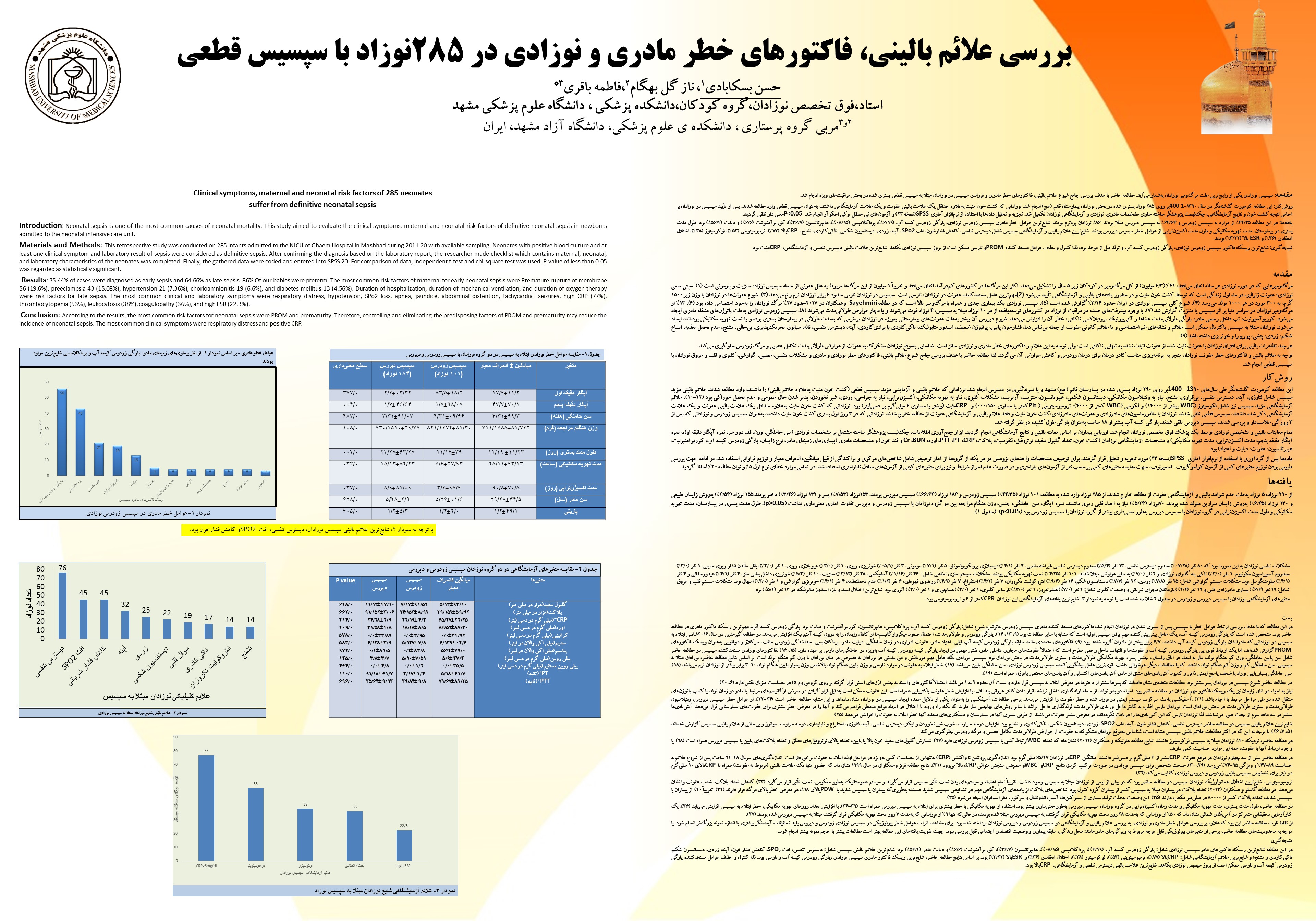بررسی عالئم بالینی، فاکتورهای خطر مادری و نوزادی در 285نوزاد با سپسیس قطعی
کد: G-1012
نویسندگان: Hassan Boskabadi © ℗
زمان بندی: زمان بندی نشده!
دانلود: دانلود پوستر
خلاصه مقاله:
خلاصه مقاله
Introduction: regarding the improvement of medical care the incidence of sepsis has shrunk, however, neonatal sepsis is one of the most common causes of neonatal mortality. This study aimed to evaluate the clinical symptoms, maternal and neonatal risk factors of definitive neonatal sepsis in newborns admitted to the neonatal intensive care unit. Materials and Methods: This retrospective study was conducted on 285 infants admitted to the NICU of Ghaem Hospital in Mashhad during 2011-18 with available sampling. Neonates with positive blood culture and at least one clinical symptom and laboratory result of sepsis were considered as definitive sepsis. After confirming the diagnosis based on the laboratory report, the researcher-made checklist which contains maternal, neonatal, and laboratory characteristics of the neonates was completed. Finally, the gathered data were coded and entered into SPSS. Central descriptive indices were used to describe the results. Results: Among 285 infants, 53.8% were boys, and 46.2% were girls. 35.44% of cases were diagnosed as early sepsis and 64.66% as late sepsis. 86% of our babies were preterm. The most common risk factors of maternal for early neonatal sepsis were Premature rupture of membrane 56 (19.6%), preeclampsia 43 (15.08%), hypertension 21 (7.36%), chorioamnionitis 19 (6.6%), and diabetes mellitus 13 (4.56%). According to the t-test, duration of hospitalization, duration of mechanical ventilation, and duration of oxygen therapy were risk factors for late sepsis. The most common clinical and laboratory symptoms were respiratory distress, hypotension, SPo2 loss, apnea, jaundice, abdominal distention, tachycardia, murmurs and seizures, high CRP (77%), thrombocytopenia (53%), leukocytosis (38%), coagulopathy (36%), and high ESR (22.3%). Conclusion: According to the results, the most common maternal risk factors for neonatal sepsis were premature rupture of membrane (PROM) and prematurity. Therefore, controlling and eliminating the predisposing factors of PROM and prematurity may reduce the incidence of neonatal sepsis. The most common clinical symptoms were respiratory distress and positive CRP.
کلمات کلیدی
Clinical Signs, Risk Factors, Early Neonatal Sepsis, Late Neonatal Sepsis, Neonate
